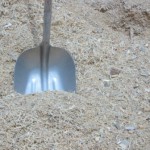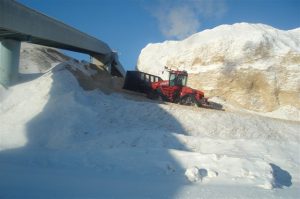An edited version of this article was published under the title “Handle with care” as a feature article in the UK “Bioenergy Insight” magazine, Volume 1, Issue 1, October 2010.
It’s fair to say that Europe is a decade ahead of the rest of the world when it comes to ‘green’ issues, and no more so than in the area of renewable energy sources, particularly utilizing woody biomass as a source of fuel.
Europe is an interesting case, as on one hand, it is the world leader on green issues and has vigorously promoted biomass as an alternative fuel; and on the other hand, it is far from sufficient sources of woody biomass.
As a contrast, Canada has a tremendous amount of woody biomass. And, for decades residual wastewood has been well-utilized as a fuel source for industrial plants. However, there is little incentive in Canada to utilize standing forests for fuel as we have such a small population, and an abundant supply of low-cost energy, for example, hydro power in BC, oil in Alberta, nuclear power in Ontario.
Likewise, Russia and the southeastern USA have large amounts of wood fibre available that can be used for energy production. Continue reading →

 appears in a myriad of species, forms and sizes; it knits together, doesn’t flow well, consolidates and packs easily; it can have a wide range of moisture contents, basic and bulk densities and calorific values; it will freeze; it is very dusty, catches fire easily and is self-combustible; it can contain all manner of contaminants. Conversely, wood pellets are uniform in size and moisture content, are very free flowing, but are quite fragile and easily degrade and require special handling.
appears in a myriad of species, forms and sizes; it knits together, doesn’t flow well, consolidates and packs easily; it can have a wide range of moisture contents, basic and bulk densities and calorific values; it will freeze; it is very dusty, catches fire easily and is self-combustible; it can contain all manner of contaminants. Conversely, wood pellets are uniform in size and moisture content, are very free flowing, but are quite fragile and easily degrade and require special handling. Care must be taken in the design of your biomass handling system whatever the form. The topic of design is as varied and complex as the material and the intent in this article is to cover woody biomass, in the form of hog fuel and pellets, which is utilized as fuel. I will discuss the subject in a broad-brush manner suitable for this publication. Following is a list and short description of things to consider when designing your system.
Care must be taken in the design of your biomass handling system whatever the form. The topic of design is as varied and complex as the material and the intent in this article is to cover woody biomass, in the form of hog fuel and pellets, which is utilized as fuel. I will discuss the subject in a broad-brush manner suitable for this publication. Following is a list and short description of things to consider when designing your system. 